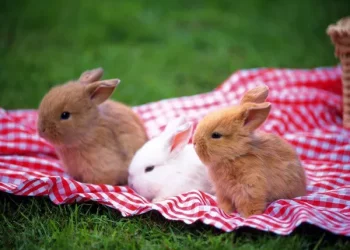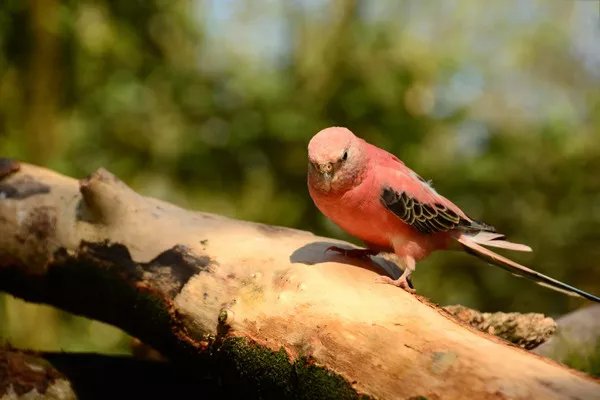The American Shorthair cat, with its gentle temperament, sturdy body, and luxurious coat, is one of the most popular and beloved breeds worldwide. Known for their resilience, they thrive in various living conditions, making them ideal companions for a wide range of households. However, understanding what American Shorthair cats eat in the wild is essential for understanding their natural instincts, dietary needs, and how we can best care for them in our homes.
In this article, we will delve into the natural diet of wild cats, specifically focusing on what an American Shorthair would eat in the wild if they were not domesticated. By exploring their behavior, natural instincts, and the foods they would hunt in the wild, we can gain a deeper understanding of how to support their dietary needs as pets.
The Wild Ancestors of Domestic Cats
Before diving into what American Shorthairs eat in the wild, it’s important to understand the history of domestic cats and their relationship with their wild ancestors. The domestic cat (Felis catus) shares a lineage with wild species such as the African wildcat (Felis lybica), which is believed to be the primary ancestor of today’s house cats. Wild cats, like their domestic counterparts, are obligate carnivores, meaning that they rely heavily on a meat-based diet to survive.
The American Shorthair, like many other domestic breeds, has retained much of its wild ancestors’ instincts, even though it has been selectively bred to live with humans. These instincts include hunting and scavenging, which are behaviors that would have been vital for survival in the wild.
In their natural habitat, American Shorthair cats would be skilled hunters, relying on their sharp eyesight, quick reflexes, and excellent hearing to catch prey. Their diet would consist primarily of small mammals, birds, and insects—foods that are high in protein and fat, essential for their energy needs and overall health.
What Would American Shorthairs Eat in the Wild?
1. Small Mammals
One of the primary food sources for wild cats, including the wild ancestors of American Shorthairs, would be small mammals. These include creatures such as:
Rodents: Mice, rats, and voles would make up a significant portion of their diet. These small mammals are abundant in many ecosystems, and cats are natural-born hunters of rodents. With their sharp claws and keen sense of smell, cats can locate and catch rodents with ease. The meat of rodents is rich in protein, which supports a cat’s muscle growth and energy needs.
Rabbits: In some areas, wild cats may hunt rabbits or hares. Rabbits are also high in protein and provide additional fat, both of which are necessary for a healthy feline diet.
Squirrels: In certain regions, squirrels would be another potential prey for wild cats. Though more challenging to catch than smaller rodents, squirrels provide a good source of protein and fat for cats.
2. Birds
Cats are notorious for hunting birds, and the American Shorthair is no exception. In the wild, birds would be an important part of their diet. Wild birds are often more accessible than mammals, especially during specific seasons when they are nesting or foraging. Common bird species that a wild American Shorthair might hunt include:
Songbirds: These small, often colorful birds are prevalent in forests, fields, and gardens. They are relatively easy to catch, especially if the cat uses its stealth to get close before pouncing.
Pigeons and Doves: Larger birds, such as pigeons and doves, might also be targeted by a wild cat, particularly in urban environments where these birds are abundant. These birds provide a larger meal, which can help sustain a cat for longer periods.
Game Birds: In some areas, wild cats may also hunt ground-dwelling birds like quails and grouse. These birds are often found in wooded or grassy areas.
3. Insects and Other Arthropods
Insects are an important dietary component for many wild cats, particularly when other prey may be scarce. Small and highly mobile, insects such as crickets, grasshoppers, moths, beetles, and flies can make up a part of a cat’s diet. Wild cats, including the American Shorthair, may also consume spiders, scorpions, and other arthropods if they are available.
Insects are rich in protein and fat, although they don’t provide as much sustenance as larger mammals or birds. However, they are still valuable when it comes to meeting a cat’s nutritional needs. Cats’ hunting instincts and agility help them catch these small, fast-moving creatures.
4. Reptiles and Amphibians
Though not as common, wild American Shorthairs might also hunt small reptiles or amphibians if they are available. In some regions, they may catch:
Lizards: Lizards are often found in warm, sunny environments, and many cats will instinctively hunt these creatures if they come across them.
Frogs: Frogs are another potential food source for wild cats. They may catch frogs by pouncing or stalking them in wetland areas or near ponds.
Reptiles and amphibians provide some protein but are generally smaller and less nutritionally dense than mammals or birds. Still, they add variety to a cat’s diet and supplement their food intake.
5. Fish and Aquatic Creatures
If an American Shorthair finds itself near water, it might hunt for fish or other aquatic creatures. While cats are not as adept at catching fish as other animals like otters or herons, they can still manage to catch small fish such as minnows, perch, or other freshwater species.
Fish is an excellent source of protein and essential fatty acids, which contribute to a cat’s healthy skin and coat, in addition to providing the necessary nutrients for growth and energy.
6. Carrion and Scavenging
In addition to actively hunting prey, wild cats are opportunistic scavengers. This means that if they come across the remains of a dead animal, they may scavenge it for food. This behavior is part of their survival instinct, as they take advantage of any available food source.
Scavenging would likely include finding carcasses of larger animals like deer or even the remains of animals killed by other predators. Although scavenged food may not always be as fresh as prey they have hunted, it still provides essential nutrients.
7. Plant Matter (Occasional Consumption)
Although cats are obligate carnivores, it is not uncommon for wild cats, including American Shorthairs, to occasionally nibble on certain plants. This behavior is more often seen in domesticated cats, who sometimes chew on grass or houseplants, but it may also occur in the wild.
Wild cats may eat grass to aid in digestion or help clear out hairballs. They might also consume small amounts of plant material to supplement their diet, particularly if their prey is not abundant. However, plant material does not form a significant part of their diet and is more of an occasional addition.
How Does This Translate to Their Diet in Domestic Settings?
While American Shorthair cats do not typically face the same challenges as their wild counterparts, understanding their natural diet can help pet owners make informed decisions about their cats’ nutritional needs.
In a domestic setting, it is essential to mimic the protein and fat-rich diet that their wild ancestors would have consumed. This is why high-quality, meat-based cat foods are the best option for American Shorthairs. Most commercial cat foods are designed to resemble the nutritional profile of their wild diet, offering a balanced mix of proteins (from chicken, turkey, beef, or fish), fats, and other essential nutrients.
Cats also require specific amino acids, vitamins, and minerals that are found in animal tissue. For example, taurine is an amino acid found in meat that is essential for a cat’s heart health, vision, and reproductive function. Similarly, arachidonic acid, an essential fatty acid, must come from animal sources. These nutrients are not found in plant-based foods, which is why a meat-based diet is critical for the American Shorthair.
Additionally, owners should be mindful of the hydration needs of their American Shorthairs. While wild cats obtain much of their water from their prey (which is about 70-80% water), domestic cats may need additional moisture in their diet, especially if they are fed dry food. Wet food or providing fresh water is essential for preventing urinary tract problems and ensuring proper hydration.
Conclusion
The American Shorthair cat, with its strong hunting instincts and carnivorous nature, would eat a diet primarily composed of small mammals, birds, insects, and occasionally fish or reptiles in the wild. These foods are rich in protein and fat, providing the essential nutrients that help the cat maintain its energy, muscle mass, and overall health. Understanding the natural dietary habits of wild cats can help pet owners provide the best nutrition for their American Shorthair, ensuring they lead long, healthy lives in our homes.
By choosing high-quality, meat-based cat food and ensuring that they receive proper hydration, American Shorthair cats can enjoy a diet that mirrors what they would consume in the wild. This knowledge helps create a more natural, satisfying, and nourishing experience for your beloved feline companion.
Related Topics:




















